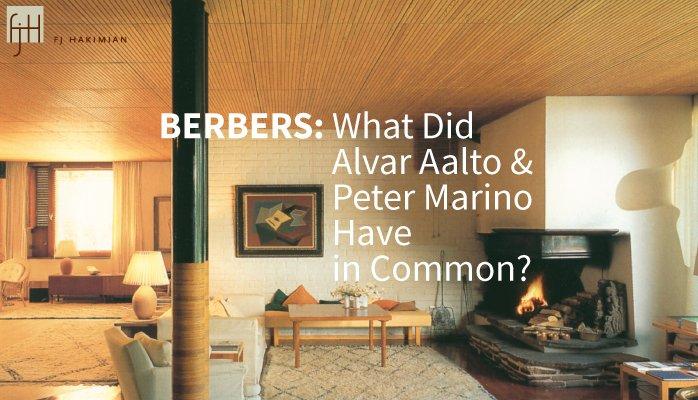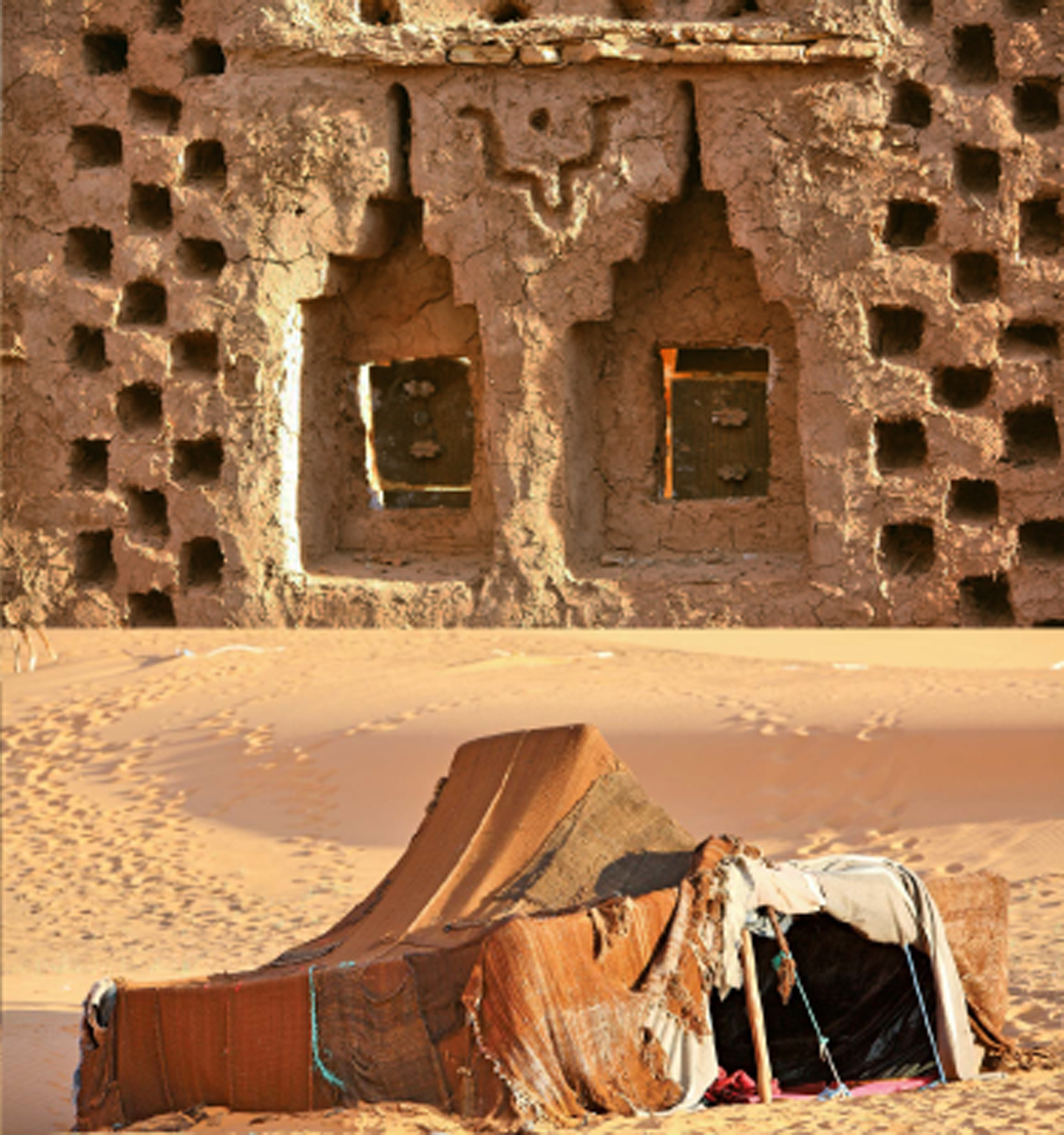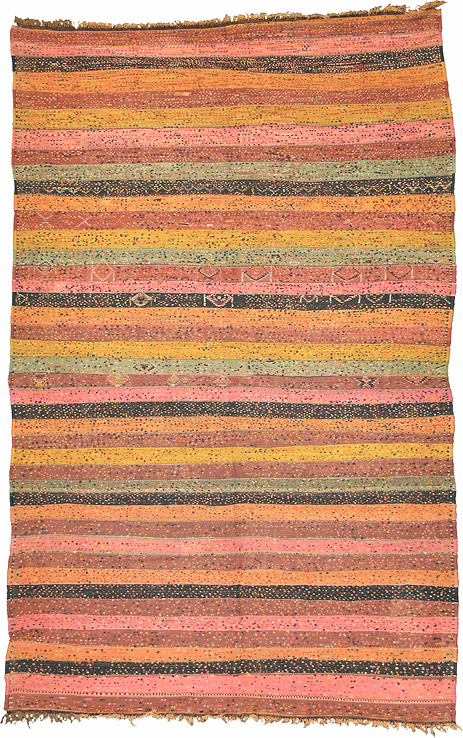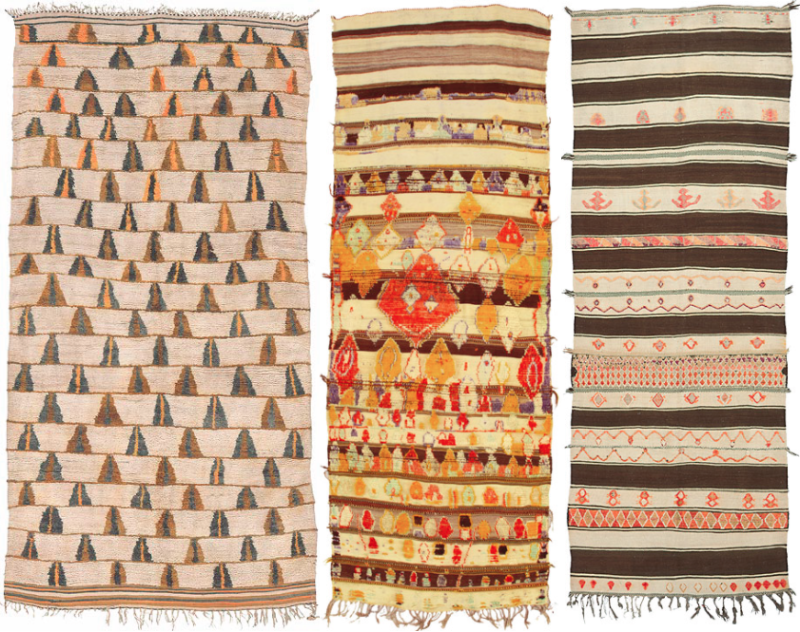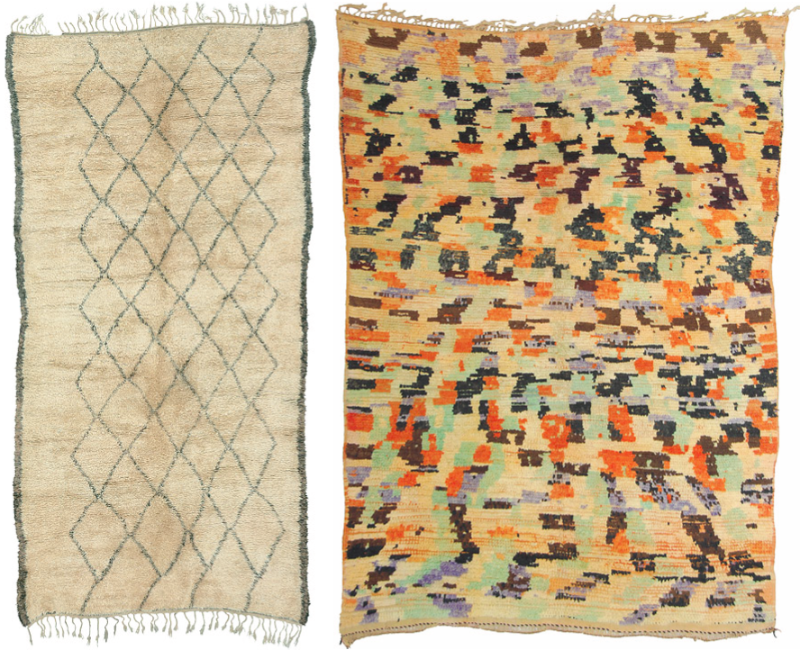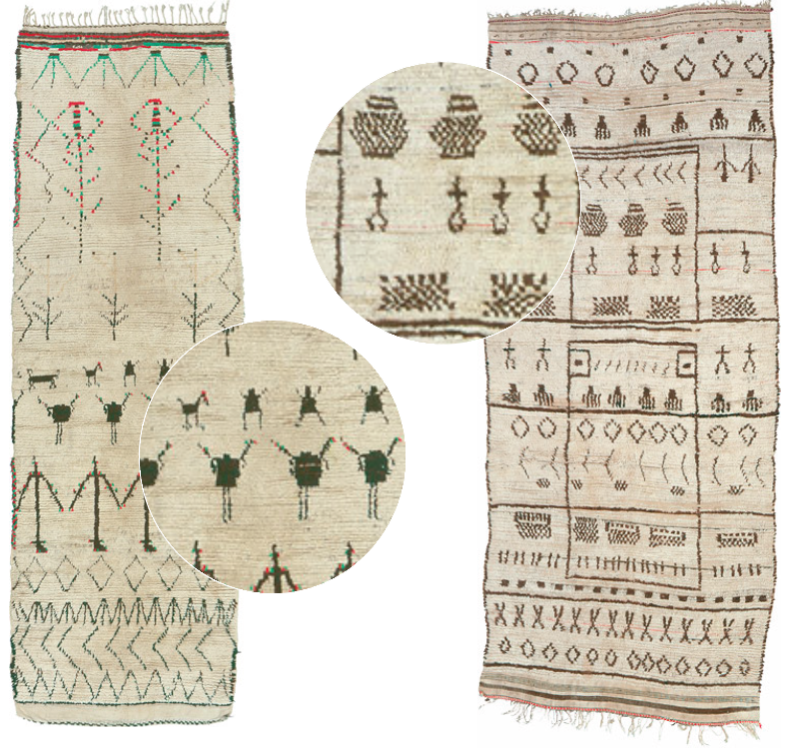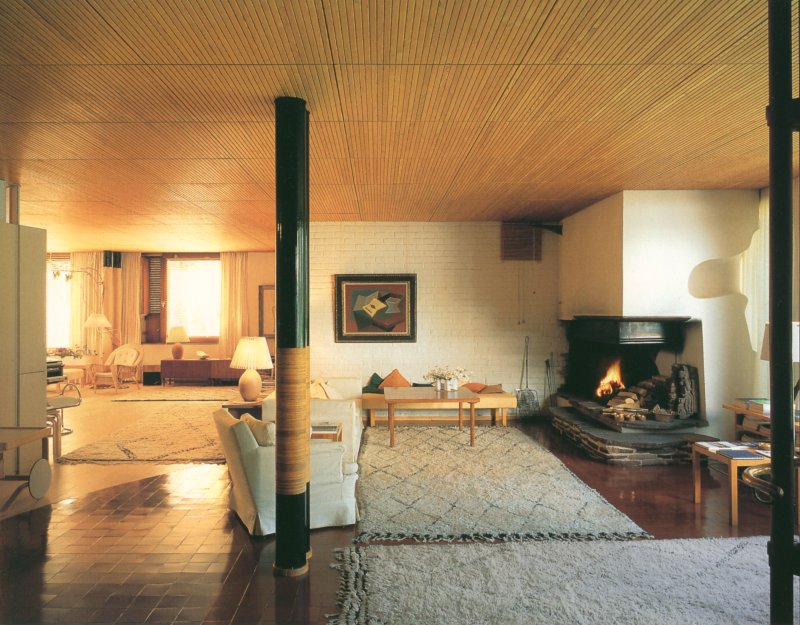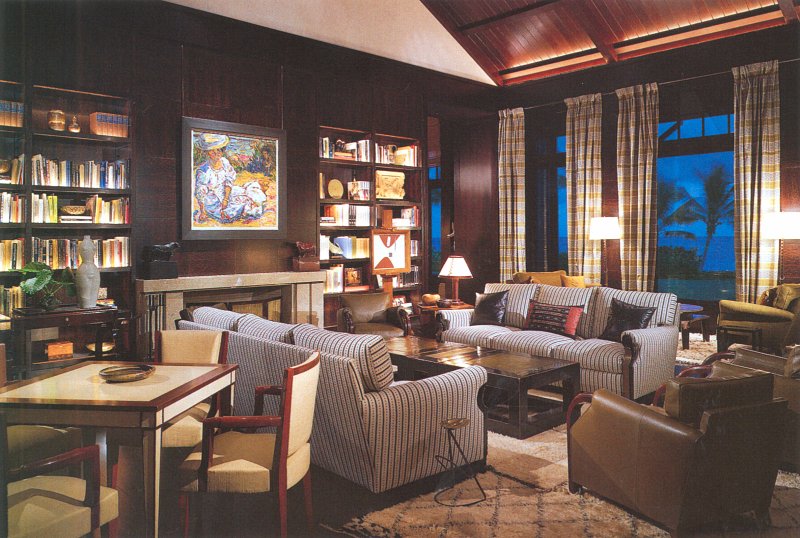About ten years ago, I took a trip to Africa with my family. My two daughters -- Rebecca, who helps manage FJ Hakimian's Manhattan gallery, and Roxanne who is our European liaison now based in London--were with me. We rented a van and traveled through many parts of Morocco and the neighboring regions, acquiring vintage carpets and meeting indigenous tribal weavers. It was during this trip that I decided to make available the fascinatingly modern and instinctive weavings by the Berber tribes for the interior design industry in the U.S. Till then, weavings by the Berbers were beloved by those in the know including serious collectors and architects who would buy them for their own houses.
The Berbers are Morocco’s semi-nomadic tribes. About seventeen Berber groups inhabiting the Northeastern Azilal province of the Moroccan High Atlas region form the confederation of the Beni-Ouaraïn.
The strong tribal character, decorative quality, and supple feel of the Berber rugs have been acknowledged and admired since long. Although, their rugs are not originally meant for decoration; rather, they would serve as mattresses for the family to withstand the freezing cold winter nights at the Atlas and then, turned over onto the other side, during the summer. The typical Berber knot, which encircles two strands of the warp instead of one, making them particularly supple.
Morocco’s color-saturated decoration and dress have long been associated with traditional Moroccan decorative art heritage. For example, shown on the left is a vintage (ca. 1930, from the FJ Hakimian Vintage Collection) rug from the Middle Atlas region. The vibrant colors of this Boujad carpet are typical of production in the region. This vibrant visual quality is no doubt what attracted Matisse to Morocco and inspired his work in the early years of the 20th century. Meanwhile, rugs from the northeastern, altitudinous colder climate present a more subtle tradition. Woven from undyed, natural wool, the field is largely cream and the decoration is picked out in delicate lines of a henna-like brown. They use geometrical patterns accented by decorative elements drawn from Berber iconography and symbology as well as protective motifs. In some rugs, pile alternates with bands of flat weave and colors from natural dyes picked up at a market.
[Above left (Morocco, ca. 1940): The warm, decorative, and playful motifs in this piece were created using wool dyed with henna. A highly prized commodity, henna was an integral part of the carpet weaving process, as it was often offered to the loom in a sacred ceremony which preceded the revered creative act.] [Above center and right (Morocco, ca. 1930-40): These decorative pieces derive visual interest from the colorful symbols sprinkled over their surface but also from the textural interplay between pile and flat weave. Generally referred to as "Glaoua" rugs, they are woven by a sub-tribe of the Aït Ouaouzguite in the High Atlas region.]
[Above (Morroco, ca. 1940): The highly abstract geometry and irregular designs of these Beni Ouarain pieces reflect the weavers' nomadic lifestyle. From the immediacy and unfiltered sincerity of the designs, one can read the humble honesty of the Berber people and their land.]
[Above (Morocco, ca.1930): The rich figurative and abstract symbols of these Azilal carpets inspire deeply personal interpretations. They convey transient narratives and the primacy of visual communication for a culture seeped in representational and oral tradition.]
When Modernism was new, Aalvar Aalto, Frank Lloyd Wright, Jacques-Emile Ruhlmann and Le Corbusier were among the architects and designers who used these soft, natural rugs as a foil for their austere interior.
[Above: Living room, Villa Mairea, Finland. Interior design by Alvar Aalto, 1939.]
[Above: Palm Beach, FL. Interior design by Peter Marino Architect, 2004.]
Some of the early adopters of Berber carpets in the world of interior design include such household names as Jacques Grange, Peter Marino and Stephen Sills.
"I love the ethnic quality of the hand -- the worn yarn, the beautiful color of the natural dyes, the earth tones -- a wonderful decorative concept that is so right for modern interior." - Stephen Sills, Sills Huniford Associates
Since launching our Moroccan collection at the FJ Hakimian Gallery in 2006, we had the pleasure of working with numerous contemporary designers who are responding to weavings by the Berber tribes with the same enthusiasm as their predecessors. We supply both vintage Berbers and custom rugs hand-made by the Berber weavers of today. Designers are seeking these rugs with renewed fervor, as they find Berber rugs' light color, softness, sheen, and loose weave ideal for today's barefoot lifestyle and light-filled interiors -- more on this in my next post.
FJ Hakimian is the leading resource for custom, modern, vintage and antique carpets and textiles. Headquartered in New York City, FJ Hakimian connects weavers, textile artists, interior designers and architects throughout the world on a common thread that is the passion for quality hand-woven carpets, mats and textiles.
Come visit us at 145 East 57th Street 2nd Floor NYC or stay connected via social media:

